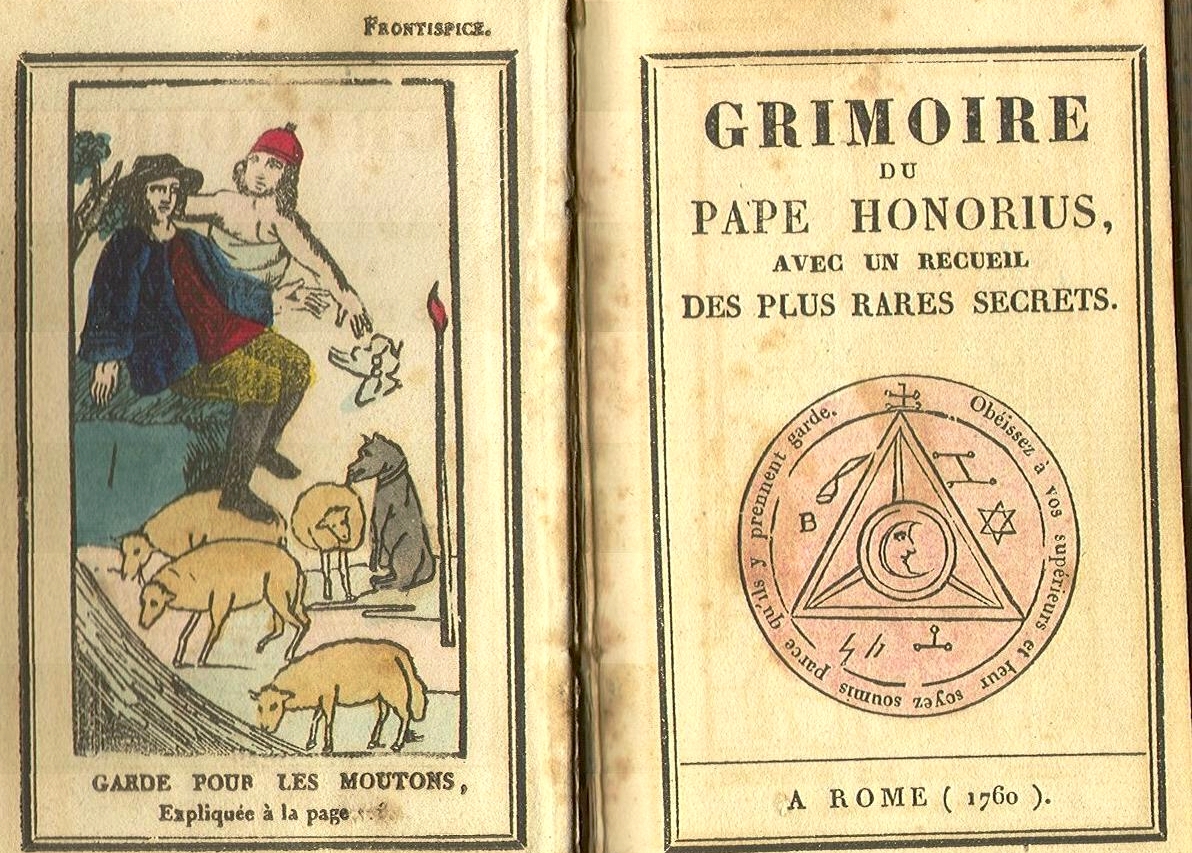The Grimoire of Pope Honorius on:
[Wikipedia]
[Google]
[Amazon]
 ''The Grimoire of Pope Honorius'', or ''Le Grimoire du Pape Honorius'', is a 17th to 18th century
''The Grimoire of Pope Honorius'', or ''Le Grimoire du Pape Honorius'', is a 17th to 18th century Waite, Arthur Edward. "The Grimoire of Honorius", ''The Book of Ceremonial Magic'', London, 1913
/ref>
by Joseph H. Peterson (1999). Goetia Honorius, Pope {{occult-book-stub
 ''The Grimoire of Pope Honorius'', or ''Le Grimoire du Pape Honorius'', is a 17th to 18th century
''The Grimoire of Pope Honorius'', or ''Le Grimoire du Pape Honorius'', is a 17th to 18th century grimoire
A grimoire ( ) (also known as a "book of spells" or a "spellbook") is a textbook of magic, typically including instructions on how to create magical objects like talismans and amulets, how to perform magical spells, charms and divination, and ...
, which claims to have been written by Pope Honorius III
Pope Honorius III (c. 1150 – 18 March 1227), born Cencio Savelli, was head of the Catholic Church and ruler of the Papal States from 18 July 1216 to his death. A canon at the Basilica di Santa Maria Maggiore, he came to hold a number of importa ...
(1150 - 1227). It is unique among grimoires in that it was specifically designed to be used by a priest, and some of the instructions include saying a Mass
Mass is an intrinsic property of a body. It was traditionally believed to be related to the quantity of matter in a physical body, until the discovery of the atom and particle physics. It was found that different atoms and different elementar ...
. While its name is derived from the 13th century ''Grimoire of Honorius
''The Sworn Book of Honorius'' ( la, Liber juratus Honorii, also ''Liber sacer'', ''sacratus'' or ''consecratus'') is a medieval grimoire purportedly written by Honorius of Thebes. The Latin word "juratus", which is typically translated to "swor ...
'', its content is closer to later grimories like the ''Key of Solomon
The ''Key of Solomon'' ( la, Clavicula Salomonis; he, מפתח שלמה []) (Also known as "The Greater Key of Solomon") is a pseudepigraphical grimoire (also known as a book of spells) attributed to Solomon, King Solomon. It probably dates ba ...
'' and ''Grimorium Verum
The ''Grimorium Verum'' (Latin for ''True Grimoire'') is an 18th-century grimoire attributed to one "Alibeck the Egyptian" of Memphis, who purportedly wrote in 1517. Like many grimoires, it claims a tradition originating with King Solomon.
The gr ...
''.
The first edition of the Grimoire is said to have appeared in 1629, and was likely forged near the end of the sixteenth century, roughly four hundred years after the death of its supposed author. According to A. E. Waite
Arthur Edward Waite (2 October 1857 – 19 May 1942) was a British poet and scholarly mystic who wrote extensively on occult and esoteric matters, and was the co-creator of the Rider–Waite tarot deck (also called the Rider–Waite–Smith o ...
, "... is a malicious and somewhat clever imposture, which was undeniably calculated to deceive ignorant persons of its period who may have been magically inclined, more especially ignorant priests, since it pretends to convey the express sanction of the Apostolical Seat for the operations of Infernal Magic and Necromancy."/ref>
References
External links
by Joseph H. Peterson (1999). Goetia Honorius, Pope {{occult-book-stub